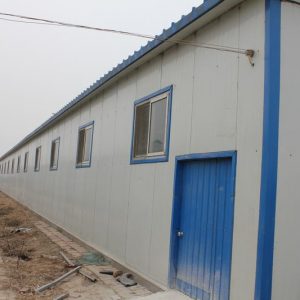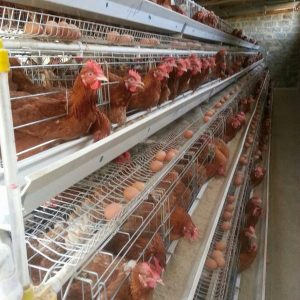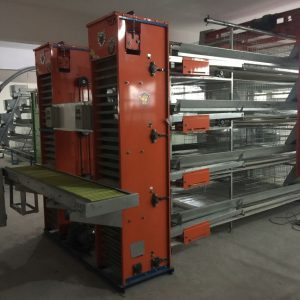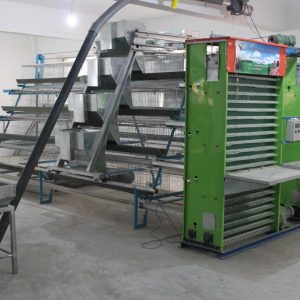
caged chicken farms
caged chicken farms There are still many breeding farms that ignore the environmental problems of the chicken coop, causing major production problems. For example, the importance of heat preservation during the brooding stage is self-evident. There is a contradiction in the temperature control of the chicken house in the early spring. If the ventilation is restricted for the purpose of heat preservation, it will cause the chicken house to be too strong in ammonia and odor, which is easy to poison the chicks, manifested as white crown, black lung, and pericardial water. Personnel neglect to clean up chicken manure in time will aggravate the consequences; if thorough ventilation, although ammonia and other odors in the chicken house are alleviated, but the heat preservation cannot be implemented completely, and the phenomenon of chickens catching cold, chickens will be caused by cold. Cases of group disease.
So, how to solve the problem of heat preservation and ventilation in broiler farming?
The various gases produced in the chicken house are mainly carbon dioxide produced by the chicken in the breath and ammonia, hydrogen sulfide, indole, cadaverine, putrescine, histamine, phenol, etc. produced by the excrement. These gases are mainly metabolized by protein , Intestinal microbial metabolism, uremic hydrolysis in feces, etc. The increase in the concentration of harmful gases such as ammonia in the house affects the growth performance of the chicken body, causing outbreaks of respiratory diseases and other diseases. In addition, breeding workers working in livestock houses with poor air quality may experience symptoms such as cough, excessive sputum, asthma, rhinitis, chest tightness, itchy eyes, fatigue, headache, and fever.
The fundamental measure to improve the environment of the chicken house is to eliminate these harmful gases produced by the broiler itself. The use of xylo-oligosaccharides in the breeding process and the addition of 150 g to 200 g/ton of feed (based on 35% xylo-oligoose sugar powder) can effectively reduce the production of harmful gases and reduce the concentration of ammonia in the house. As a good prebiotic substance, xylo-oligosaccharides reach the colon directly and are used by the beneficial bacteria such as bifidobacteria and lactobacillus in the intestine to promote the growth and reproduction of beneficial bacteria and inhibit the growth of harmful bacteria to regulate the organism’s micro-ecology The effect of balance. Beneficial bacteria can improve the digestion and absorption rate of protein, and synthesize non-protein nitrogen in the intestine into amino acids and protein for animal use, thereby reducing the concentration of harmful gases such as ammonia and hydrogen sulfide in feces and achieving the purpose of deodorization. The reduction of ammonia concentration can significantly reduce the occurrence of respiratory diseases and eye diseases.
The health of the chicken house environment is not only a guarantee for breeding, but also has good social and ecological benefits. Greenhouse gases cause global warming and are a problem that threatens all mankind. The aquaculture industry “contributes” a considerable proportion of greenhouse gases, which has attracted everyone’s attention. As a new type of green additive, xylo-oligosaccharides are pollution-free, pollution-free, and residue-free, reducing the emission of harmful gases in the broiler breeding process, and can enhance the body’s immunity, reduce the occurrence of diseases, improve the growth performance of broilers, and reduce the feed-to-weight ratio , Is being recognized by the majority of breeding companies.
The weather in spring is characterized by hot and cold weather, large temperature changes, and frequent changes in the temperature of a day. The large temperature difference between day and night makes it difficult for chickens to adapt and is prone to diseases. In this critical climate transition period, the chicken house environment has become a key factor for breeding. A good breeding environment is not only the guarantee of animal welfare, but also can effectively promote the growth and health of animals and bring immediate economic benefits.



